Imagine families across the country counting on strong, muscular dogs to fill their homes with loyalty and warmth. According to research, about 97% of dog owners say their pets are part of the family, with over half (51 %) treating them just like a human family member. That’s not fluff—that’s a real connection.
When you’re looking for that perfect blend of physical prowess and unwavering devotion, you’re tapping into traits that aren’t just preferences—they’re rooted in genetics and instinct. That means the muscular partner you’re picturing isn’t just built like a tank—they’re wired to protect and connect.
It’s these two powerful threads—family bond and instinctive strength—that make the search for the perfect muscular, loyal breed so compelling. What follows in this blog is a look at breeds that carry both heart and muscle—and why those traits make them natural family members, not just pets.
Popular Muscular Dog Breeds For Loyal Family Members
Here are the 7 dog breeds:
1. Boxer
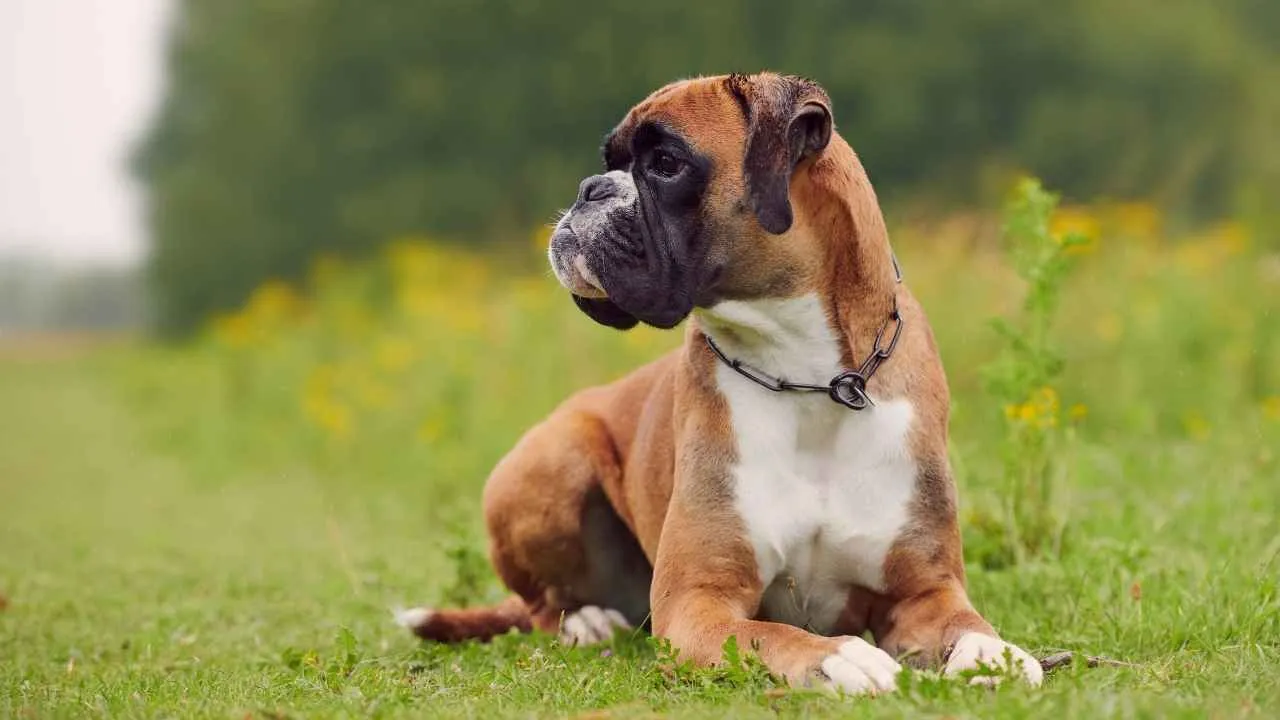
Boxers originated in Germany and quickly became recognized for their balance of strength and playfulness, making them one of the most popular muscular dog breeds for loyal family members.
Their athletic frame, paired with an affectionate personality, makes them a natural fit for households that want both energy and devotion.
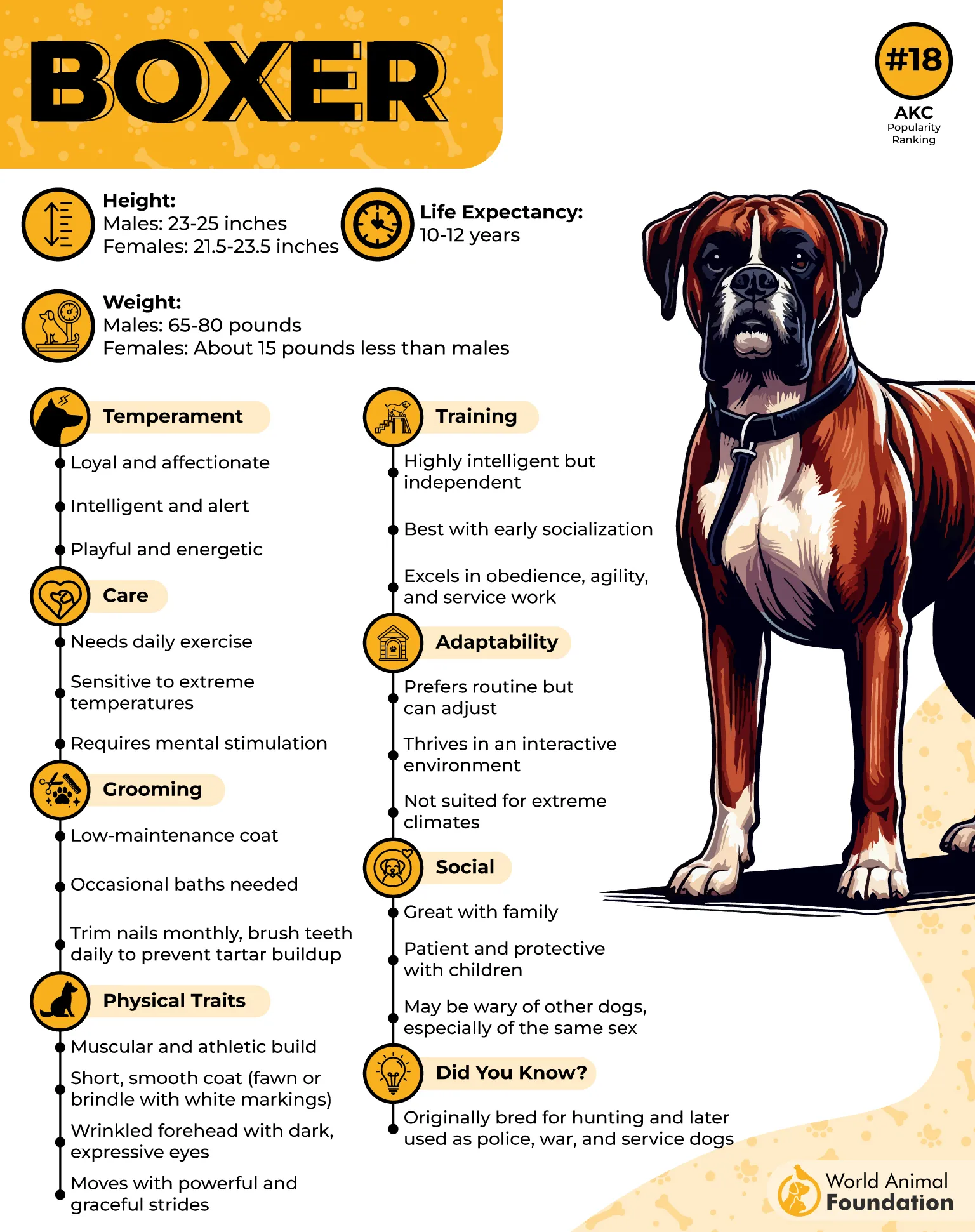
Key Traits of the Boxer
Medium-sized dogs with a muscular build and smooth coat.
According to PetMD, they are known for boundless energy, playful jumping, and excellent running ability.
Thrive in active households where exercise is part of daily life.
Require 30 minutes to two hours of exercise and mental stimulation every day.
Coat colors include fawn, brindle, and white, often with black or white markings.
Floppy ears are now common, as ear cropping has declined due to health concerns.
Grooming needs are minimal thanks to their short, smooth coat.
Prone to brachycephalic issues (overheating, breathing problems).
Because of their background as hunting dogs, Boxers often have a strong prey drive. This means they may feel the urge to chase after birds, squirrels, or other small animals. To keep them safe, it’s best to have your Boxer on a leash or in a secure, fenced-in yard whenever they’re outside.
Many Boxers also love to dig, and some are clever enough to tunnel right under a fence. That’s why keeping an eye on your pup during outdoor playtime is important—you’ll prevent escapes and keep your yard intact.
🎧 Dogcast
Episode 4 — Chihuahua vs Shih Tzu | When Dogs Deserve Oscars
If you don’t hear sound, tap the button above to enable audio.
2. Rottweiler
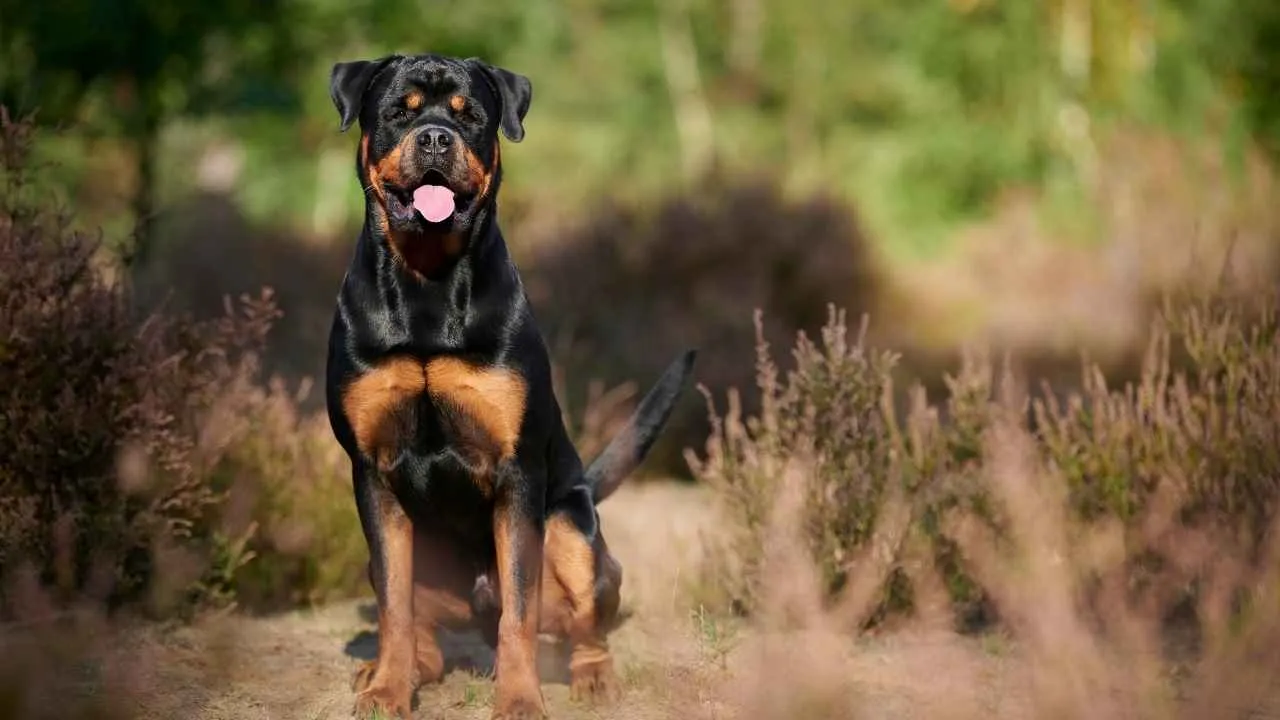
Rottweilers were originally bred as working farm dogs and later became known as excellent guard dogs, combining power with loyalty.
Despite often being misunderstood due to past associations with dog fighting, the truth is these dogs are incredibly loyal companions when raised with the right guidance. Their muscular frame and steady temperament make them one of the strongest family protectors in the canine world.
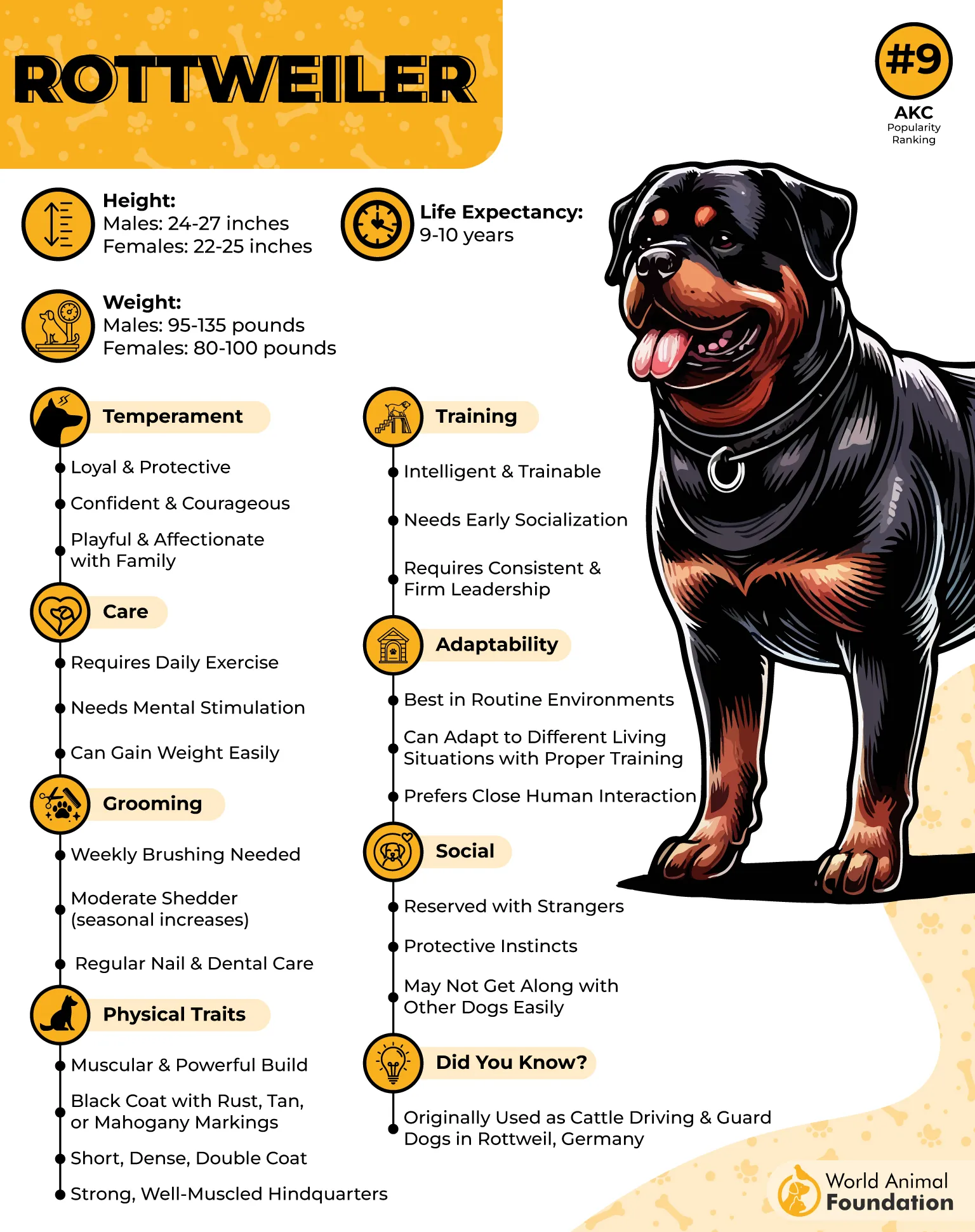
Key Traits of the Rottweiler
Large, muscular dogs with impressive strength and endurance.
Naturally protective with a strong guarding instinct.
Highly intelligent and quick to learn new commands.
Require firm, consistent training and early socialization.
Thrive on human contact and dislike being left alone.
Need at least 2+ hours of daily exercise, including running and play.
Adaptable to many roles: service, police, and family protector.
Short, thick coat that’s easy to maintain.
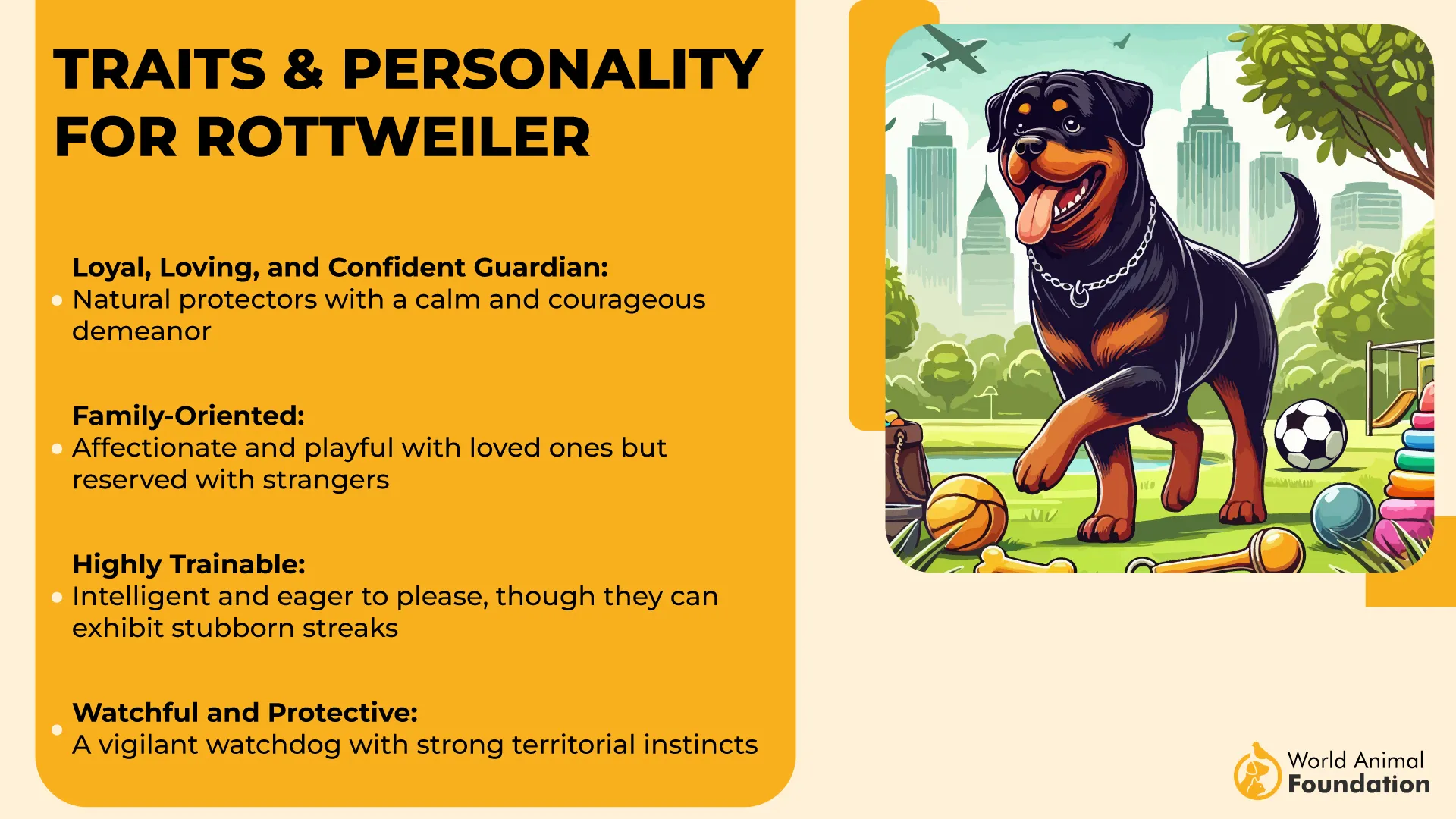
Rottweilers may seem aloof or serious around strangers, but at home, they often reveal their goofy, playful side—the very traits that make them so lovable to their families.
Many don’t realize they’re not lap dogs, so don’t be surprised if your Rottie tries to climb into your lap for a cuddle! With early training and proper socialization, their natural protective instincts can be shaped into confident, positive behavior.
3. Doberman Pinscher
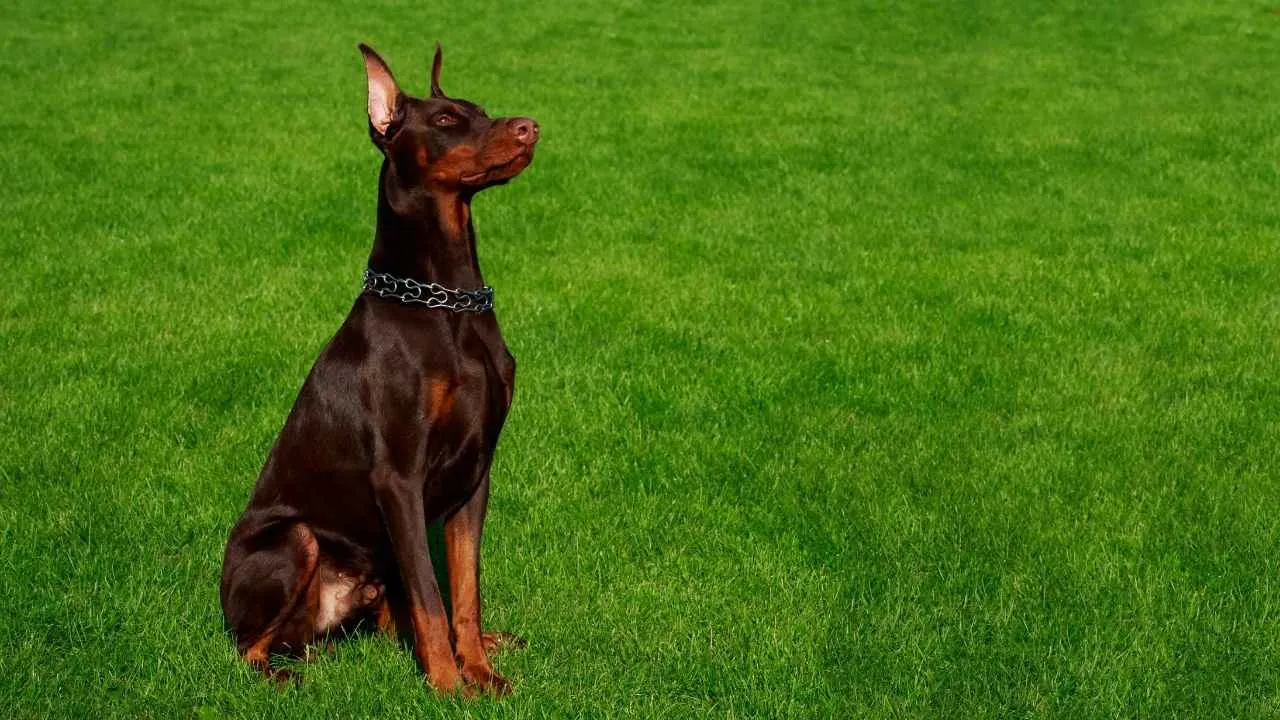
The Doberman Pinscher has earned a reputation as both a loyal family dog and a great guard dog. Bred in Germany in the late 1800s, these dogs were designed to combine intelligence, speed, and strength.
Their alert nature and unwavering devotion make them reliable protectors of the home. With early training, they grow into disciplined companions who balance sharp instincts with loyalty.
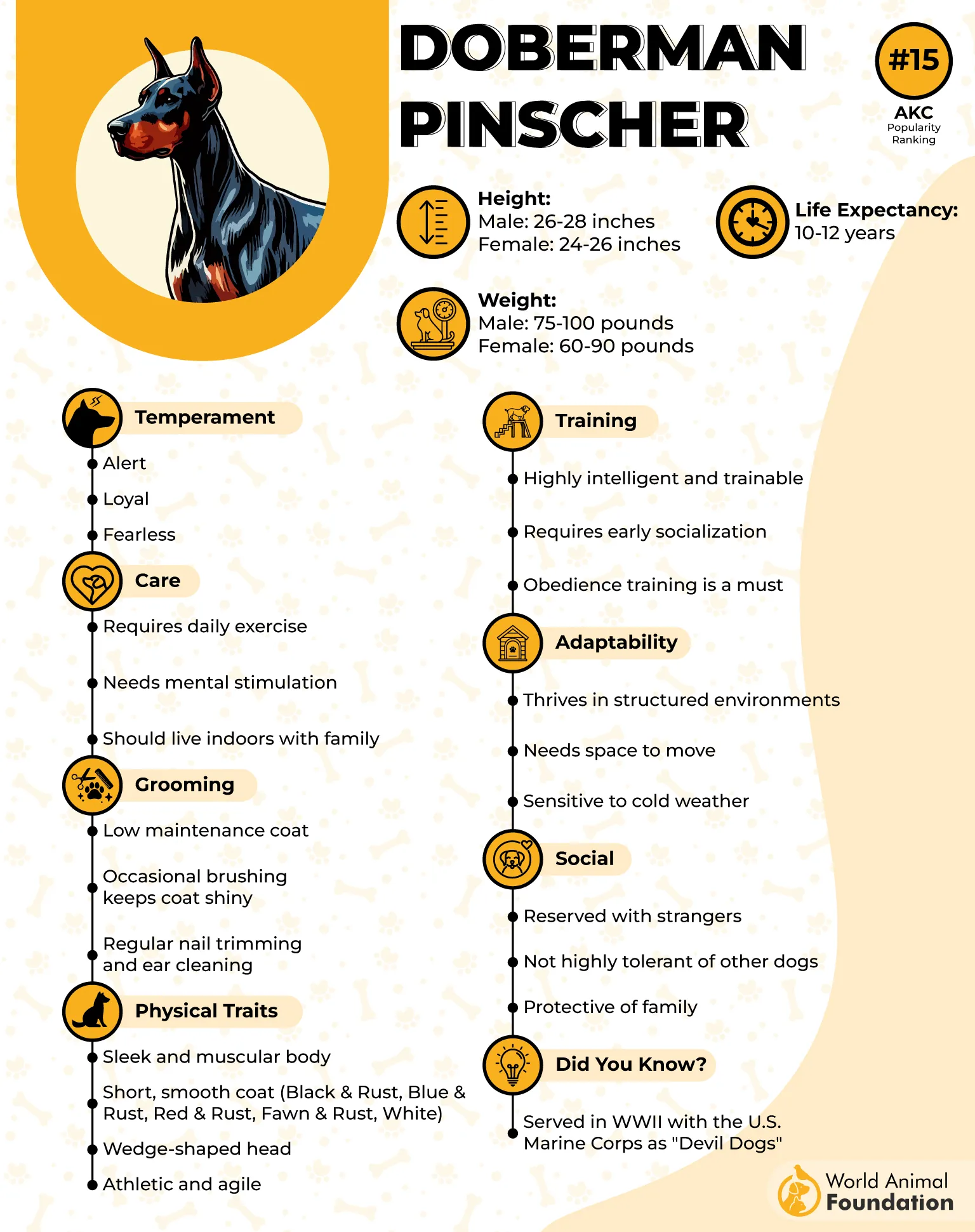
Key Traits of the Doberman Pinscher
Large dog with an athletic and muscular build.
Highly intelligent and alert—quick learners with excellent memory.
Naturally protective and cautious around unfamiliar people.
Require consistent exercise to avoid destructive or unwanted behaviors.
Known for strong prey drive; best managed with a secure leash or fenced yard.
Thrive on both physical activity and mental stimulation.
Socialization and obedience are crucial from puppyhood.
Dobermans naturally make excellent family protectors—there’s no need for special guard training. In fact, many breed experts caution against it, since extra guard training can sometimes lead to overprotective or aggressive behavior.
With proper care, training, and socialization, a Doberman’s protective instincts will shine through in a safe and balanced way.
4. Bullmastiff
The Bullmastiff has long been respected as one of the excellent watchdogs for country estates and homes alike. With their imposing size and loyal temperament, they strike a balance between protector and great family dog.
For households that love big dogs, Bullmastiffs bring strength and affection in equal measure, making them a natural choice for many dog lovers.
Key Traits of the Bullmastiff
Large, muscular breed with a solid, powerful build.
Originally bred in England to guard estates against poachers.
Known for quiet, watchful protection rather than constant barking.
Loyal to family, often willing to protect them at any cost.
Coat is short and easy to maintain; colors include brindle, fawn, and red with a black mask.
Requires firm, consistent training due to intelligence and independence.
Exercise needs are moderate in adulthood but limited during puppy growth.
Prone to hip dysplasia, so joint health monitoring is essential.
Bullmastiffs are gentle giants—calm, affectionate, and deeply devoted to their families. While they may be a little reserved with new people at first, they usually settle in once they feel comfortable.
These dogs are typically good with young children and can get along well with other pets. Still, as with any breed, it’s always best to supervise interactions between kids and dogs to keep playtime safe for everyone.
5. Great Dane
Great Danes are often remembered for their history as hunting dogs, but today they’ve earned a spot among the strongest dog breeds admired by families around the world. Despite their imposing size, these gentle giants are patient, loving, and surprisingly easygoing.
They adapt well to homes with children and can coexist peacefully with other dogs and other pets, provided they’re socialized from an early age.
Key Traits of the Great Dane
Their towering size makes them one of the largest canine breeds.
Muscular build with a regal stance and strong frame.
They have an affectionate and gentle temperament despite their imposing presence.
Originally developed in Germany for boar hunting.
Known as loyal family protectors and natural watchdogs.
Require daily walks and moderate activity to maintain health.
Short, smooth coat that sheds lightly except during seasonal changes.
According to Pawlicy, they are prone to bloat, so feeding schedules and exercise timing are critical.
Owning a Great Dane means embracing their incredible size—everything about them is larger than life! That includes their appetite. Feeding a Great Dane will cost considerably more than feeding a smaller breed.
These gentle giants also need plenty of space to stretch out and move around, especially during their younger, energetic years. City living is possible, but only if you’re committed to giving your Dane long, daily walks to keep them happy and healthy.
6. Cane Corso
The Cane Corso is one of those intelligent dogs whose reputation as a guardian is matched by their devotion to family. This breed carries centuries of history as a working protector, and today they’re admired for being both a powerful defender and a loving companion.
Known for their confidence and loyalty, they are also extremely devoted to the people they bond with, making them one of the most respected muscular breeds for family life.
Key Traits of the Cane Corso
Short, dense coat protects against the weather while staying sleek.
Coat colors include black, fawn, and brindle, often with dark masks.
Their protective nature makes them excellent guardians of home and family.
Generally calm and affectionate with children, they are raised alongside them.
Can adapt to homes with other pets if introduced early and carefully.
Thrive in spacious environments but adjust to smaller spaces with training.
Need consistent, firm training and socialization to guide their strong will.
Robust overall health, but can be prone to joint issues like hip dysplasia.
The Cane Corso comes from a long line of hardworking dogs, which gives them a naturally serious and sensitive temperament. How they grow up largely depends on the training and care they receive early on.
With a patient, experienced, and loving owner, Cane Corsos can be incredibly gentle and affectionate companions. But in the wrong hands—if neglected, mishandled, or poorly trained—they may develop reactive or challenging behaviors.
7. American Staffordshire Terrier
The American Staffordshire Terrier, or AmStaff, is a breed that blends strength with loyalty. These powerful dogs have long been admired for their courage, intelligence, and devotion to the people they love.
With proper socialization, they become devoted companions who thrive on being part of family life. According to WebMD, their athletic build and sharp mind make them excellent candidates for activities that demand focus and discipline, including obedience training.
Key Traits of the American Staffordshire Terrier
Medium-sized but solidly muscular build with strength and agility.
Broad head, strong jaws, and well-defined cheekbones.
Short, glossy coat that comes in a wide range of colors and patterns.
Naturally protective and deeply loyal to their families.
Playful, affectionate, and good with children under supervision.
Require early socialization to get along with other dogs.
Highly intelligent and responsive to reward-based training.
Athletic and energetic — thrive with sports, agility, and obedience work.
Low-maintenance grooming with minimal shedding.
American Staffordshire Terriers can be prone to anxiety, and sometimes this shows up as separation anxiety when left alone. Starting training early—and keeping it consistent—can make a big difference. A steady daily routine also helps your AmStaff feel secure and relaxed.
While they may bark at unusual sounds, AmStaffs are typically not overly noisy, which makes them surprisingly well-suited for apartment living.
Conclusion
Muscular dog breeds are more than just strong and impressive — many of them grow into good family pets when given proper care, structure, and training. Their loyalty and deep bond with their people make them dependable companions at home, while their instincts also shape them into protective dogs when needed.
With early socialization, these breeds can learn to handle unfamiliar dogs and new situations with confidence and calmness.
Beyond guarding and companionship, some even excel as therapy dogs, using their gentle side to bring comfort and reassurance. What this really means is that strength and muscle go hand in hand with heart and devotion, making these breeds stand out as loyal family members in every sense.


